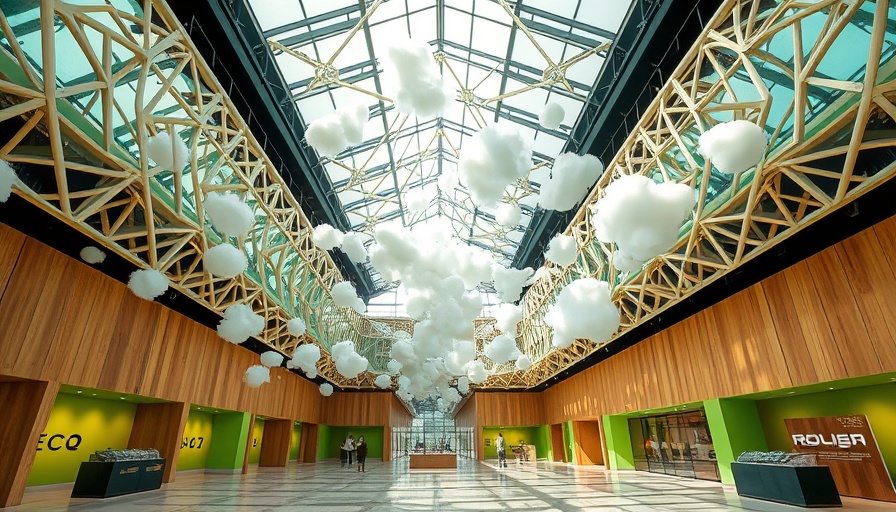
Revolutionary Building Material: Meet the Living Gel
It sounds like something from a science fiction novel, but scientists at ETH Zurich are turning dreams into reality with a groundbreaking material that combines biology and architecture. This innovative printable gel, infused with ancient cyanobacteria, is not only alive but also serves a dual purpose: it grows and captures carbon dioxide (CO₂) from the atmosphere. Displayed in architectural installations in Venice and Milan, this 'photosynthetic living material' merges art, science, and sustainability, showcasing the potential for buildings to actively combat climate change.
The Science Behind Living Materials
At the heart of this technological advancement is the ability of cyanobacteria to perform photosynthesis effectively, enabling them to convert CO₂ and sunlight into biomass. Professor Mark Tibbitt, who leads the interdisciplinary research team, emphasizes that the living material's unique capability allows it to double its carbon sequestration. Unlike traditional materials, this gel not only stores carbon as biomass but also generates solid carbonates during the photosynthesis process—adding another layer of environmental benefits. As the microorganisms metabolize, the materials also produce solid minerals like lime, which act as a stable carbon sink.
Shaping the Future of Architecture
This living building material is a step towards a more sustainable future. It requires minimal resources: just sunlight and nutrient-rich seawater. *"As a building material, it could help to store CO₂ directly inside buildings in the future,"* states Tibbitt. This product could change the landscape of urban architecture, reflecting a growing trend where homes and structures play an active role in environmental conservation.
Local Implications: The Dallas Connection
As cities like Dallas strive for greener living, innovations like these hold immense potential for urban development. With the cost of living in Dallas increasingly becoming a crucial topic, incorporating sustainable materials may counteract environmental issues alongside economic growth. The Dallas lifestyle is evolving, with residents becoming more environmentally conscious. The dual focus on lifestyle and sustainability sets a new benchmark for living in Texas.
Benefits of Living Building Materials
Utilizing materials that cleanse the air while also serving structural purposes offers incredible benefits. These materials not only reduce the carbon footprint during construction but can also contribute to the well-being of inhabitants. The aesthetic appeal of such innovative designs could attract lifestyle influencers and promote Dallas as a hub for sustainability in architecture.
Future Trends: What Lies Ahead?
Imagine the possibilities when this technology becomes widespread. Future buildings could transform urban settings into living ecosystems, promoting a healthier environment. As we face climate change challenges, innovations like these create hope. Integrating urban design with ecologically friendly materials can elevate living standards while reinforcing Dallas’s image as a leading city in innovation and sustainability.
Practical Insights for Living in Dallas
Living in Dallas offers a variety of options for those interested in sustainable living practices. From community awareness programs to local initiatives focused on minimizing carbon footprints, residents can contribute actively to environmental preservation. Dedicating efforts to understanding the cost of living in Dallas—both economically and ecologically—can pave the way for more responsible lifestyle choices.
This new frontier in building materials can reshape our future, guiding us towards more sustainable cities. By adopting and promoting living materials within your community, you not only contribute to a greener legacy but also enhance your quality of life.
 Add Element
Add Element  Add Row
Add Row 



Write A Comment